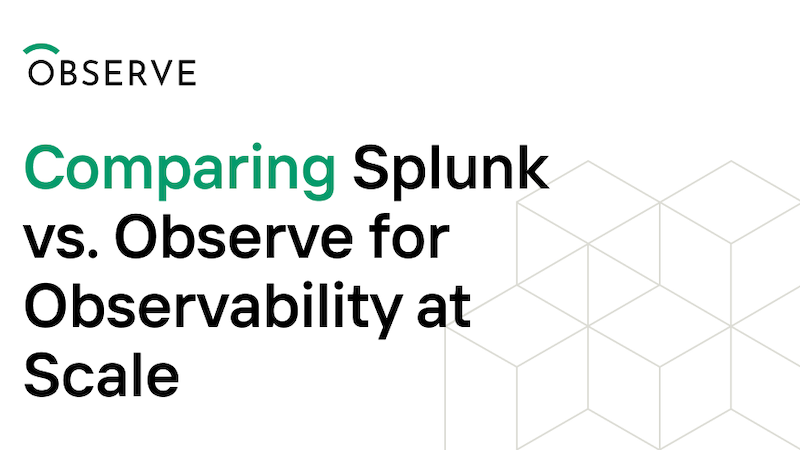Compare
Is observability data growing faster than your budget?
Compare Observe vs Splunk. Replace or augment Splunk deployments with Observe to gain better performance while lowering the total cost of ownership.
Splunk: High total cost of ownership
Designed decades ago, Splunk’s traditional architecture cannot cost-efficiently handle the high volume of fast-moving telemetry data that today’s cloud and cloud-native applications generate.
Single-tenant architecture and lack of auto-scaling mean customers have to plan for peak capacity, leading to inefficient resource utilization and higher costs.
Splunk customers are responsible for managing infrastructure, data lifecycle, and data tiers, leading to an unnecessary burden on valuable engineering resources.


Splunk
13 months by default for all data
Limited:
- Traces: 8 days
- Logs: 90 days
- Metrics: 13 months


Comparing Splunk vs. Observe for Observability at Scale
Splunk and Observe are both observability platforms designed to ingest, store, and analyze telemetry such as logs, metrics, and traces. Each provides search and visualization capabilities to help engineers troubleshoot systems and understand application behavior. While both platforms are commonly used for log management and analytics, there are many differences in the way they have been designed and implemented. This paper highlights how these divergent approaches impact their suitability as scalable log management solutions.









